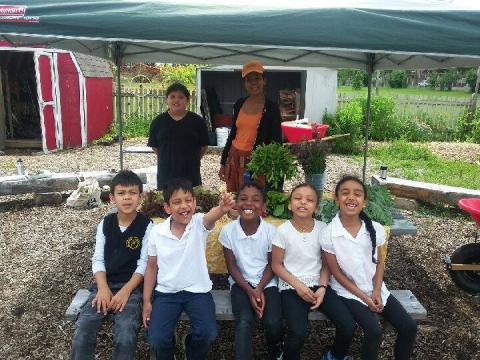
PACT Grow-to-Learn School Gardening Program
The PACT Grow-to-Learn Schoolyard Gardening Program teaches schools and communities about food and gardening. The program creates safe, experiential and positive learning environments in low-income neighbourhoods, as well as acts as a catalyst in raising awareness of important issues related to healthy eating/nutrition, food security, environmental sustainability and hunger in our schools and local communities.
Over the past six years, PACT has partnered with the TDSB and TCDSB to expand its Grow-to-Learn program to meet community need; creating and transforming unused, often grey spaces into bountiful organic gardens where children and youth learn about harvesting food, sustainability and community building.
Connecting Communities, Transforming Lives
The PACT gardens have a profound and positive impact on thousands of students and staff each year, connecting them directly to the wonders of the natural world and environment. As students observe and participate in the entire growing cycle from seedlings to harvest, they learn first hand about important issues related to the environment and that impact their entire community. They also truly experience compassion and empathy through the gift of giving by delivering fresh organic produce to local food banks and food/culinary programs for youth supporting those less fortunate within our communities.

Our largest school garden at John Polanyi CI in the Lawrence West community is a remarkable 1.5 acre urban farm, education hub and community gathering space.
This garden has become a transformation model for one neighbourhood that provides high-quality, experiential learning opportunities; fresh, organic produce to low-income families; weekly markets and dinners for local seniors and marginalized neighbours; and an alternate source to the food bank. This site also diverts thousands of pounds of waste through its Community Compost Exchange and donates large amounts of fresh food to local food banks.




